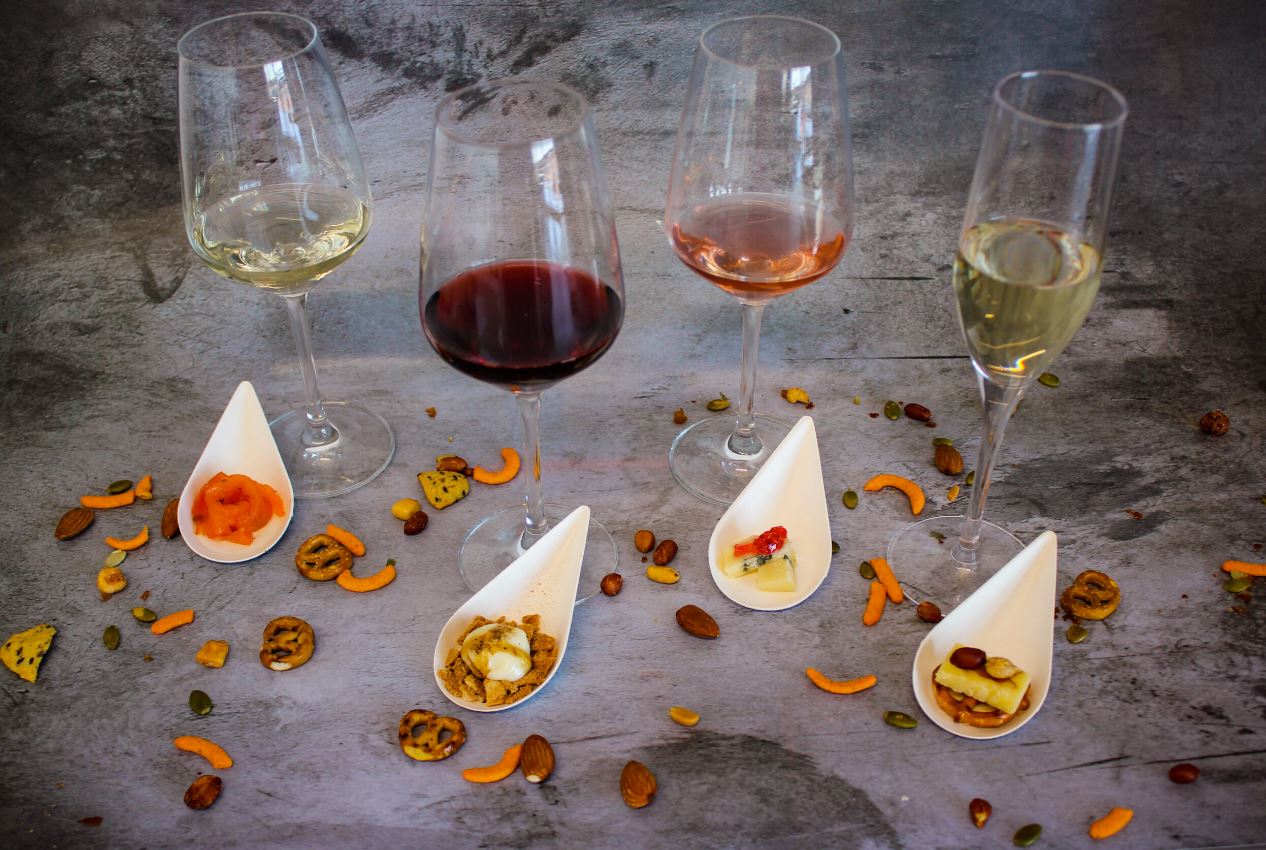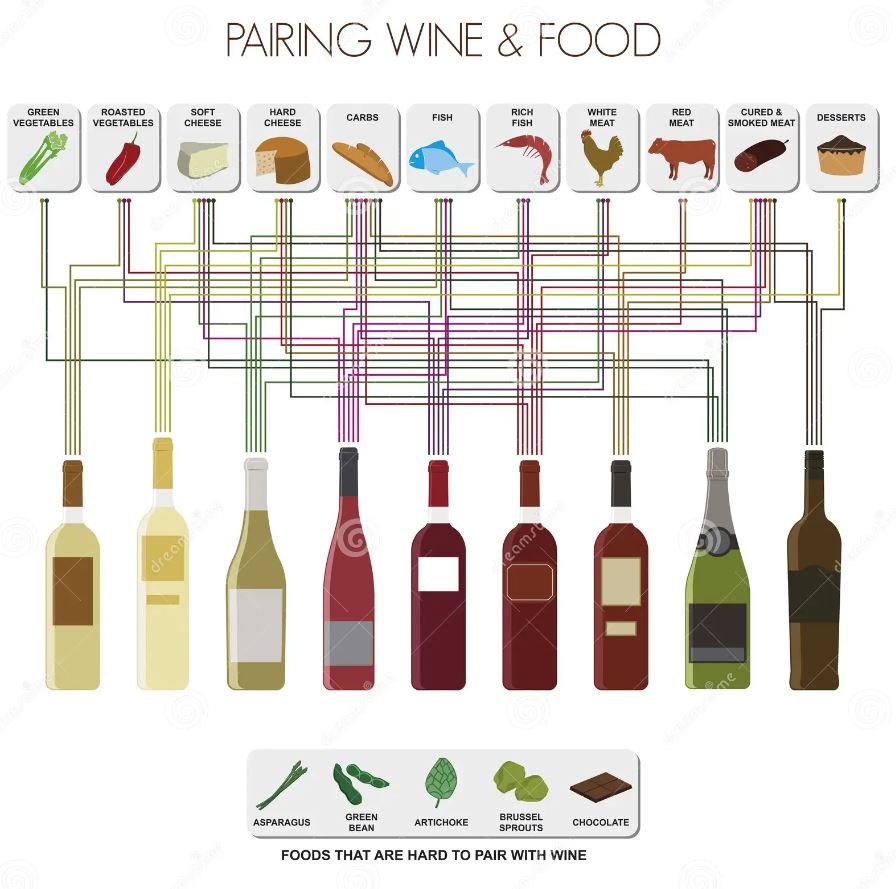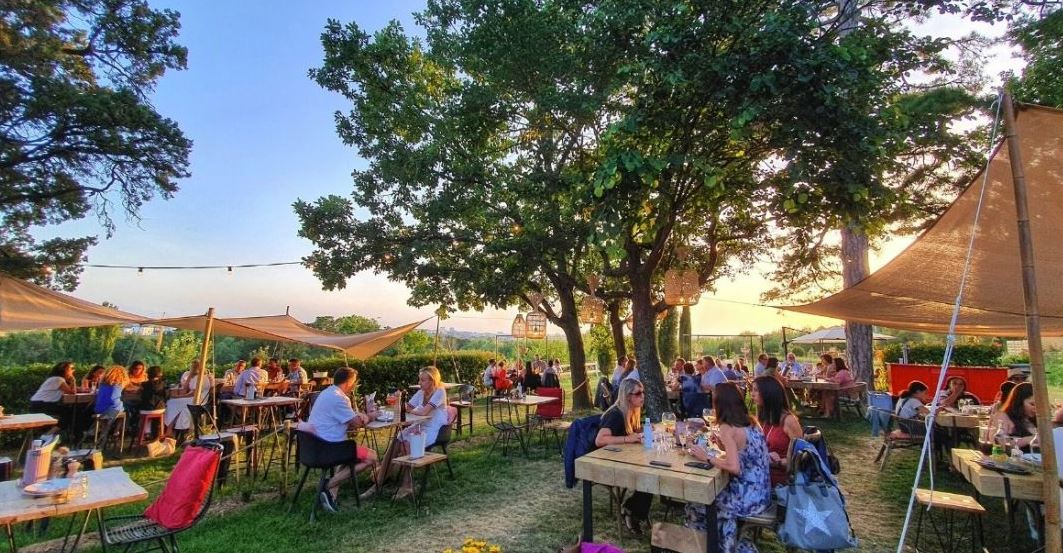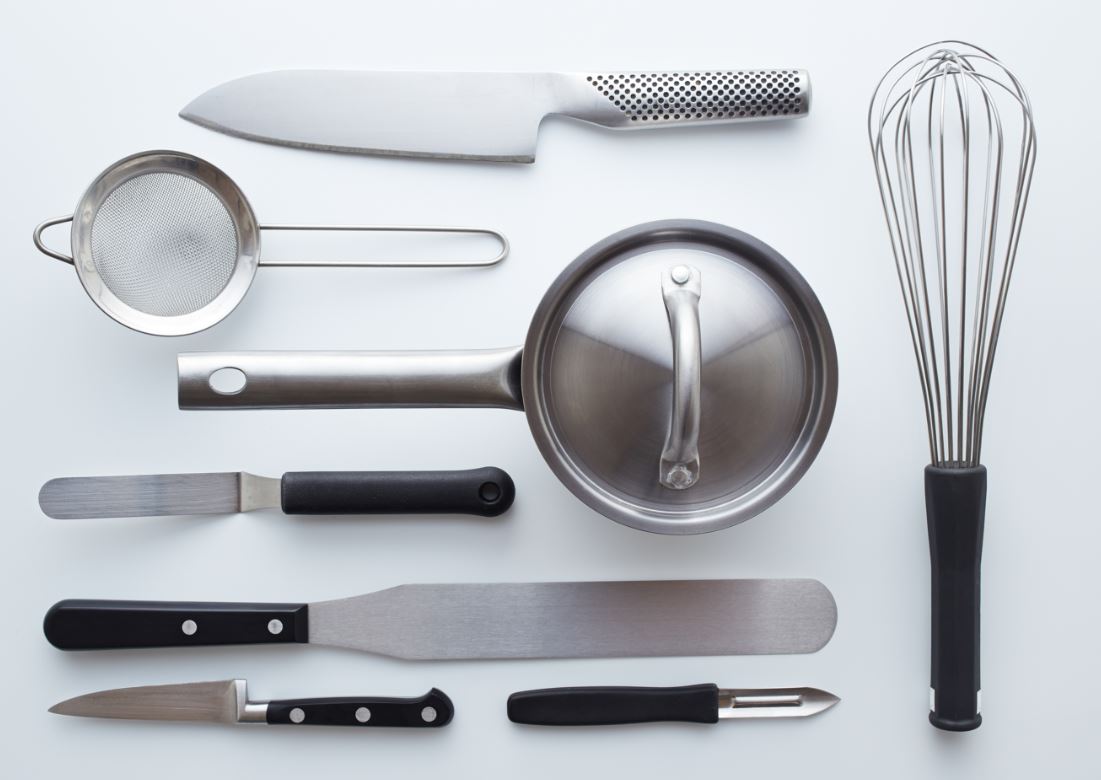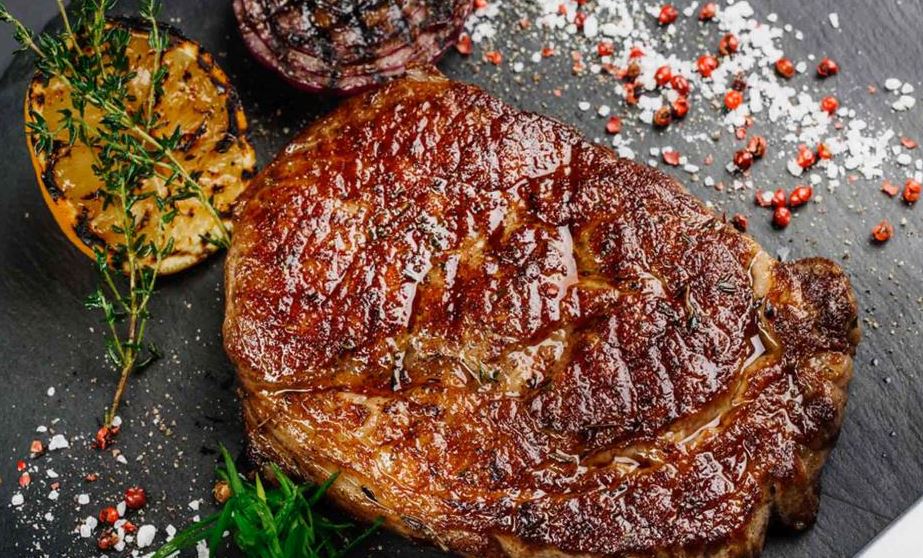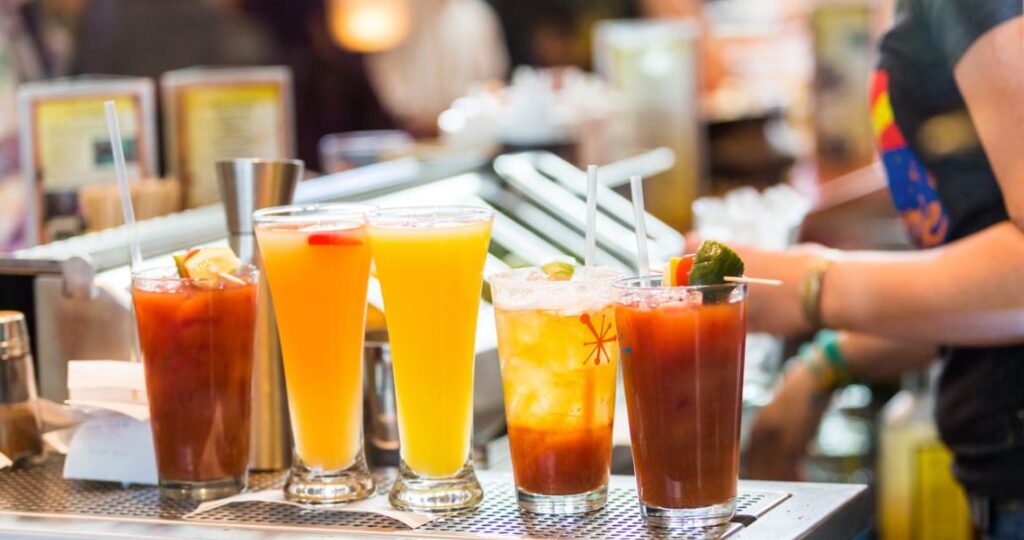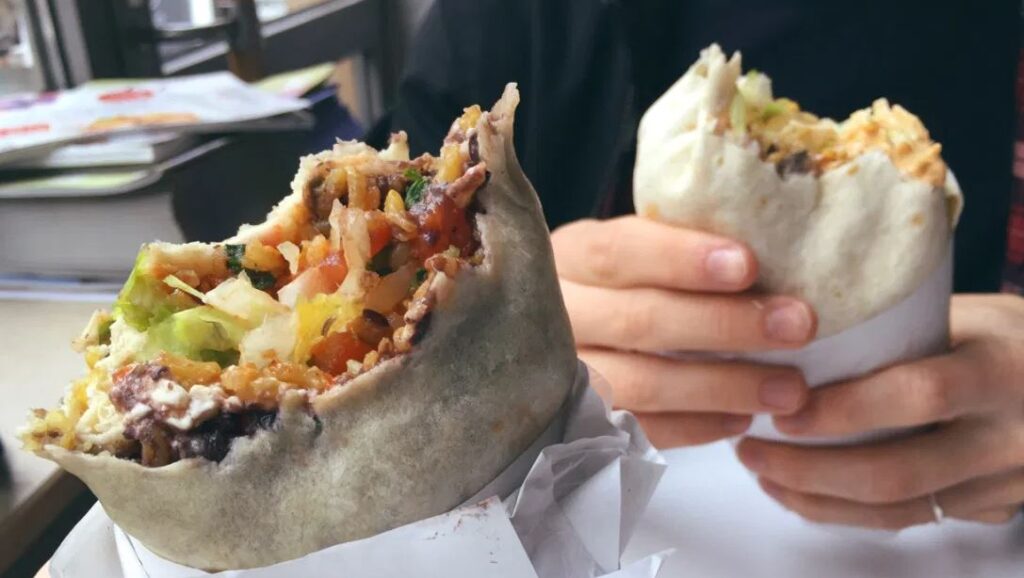Planning a party can be daunting, especially when it comes to choosing the right catering service. Various options are available, from full-service catering to food trucks, making it overwhelming to decide which is best for your event.
In this article, we will explore the different types of catering services, factors to consider when making your choice, menu options and customisation, additional services offered by catering companies, tips for working with a catering company, and ultimately, how to choose the perfect catering service for your party.
Let’s dive in!
Types of Catering Services
- Catering services come in various types to suit different needs and occasions. These services include:
- Full-Service Catering: Ideal for upscale events where guests expect a high level of service. Professional caterers handle everything from food preparation to setup and cleanup, allowing hosts to relax and enjoy the event.
- Drop-Off Catering: Convenient for smaller gatherings or office meetings, providing delicious food without needing on-site cooking.
- Buffet Catering: Offers a diverse selection of dishes, perfect for events where guests prefer to choose their meals.
- Food Truck Catering: Brings a fun and interactive element to outdoor parties or casual events, offering a unique dining experience.
Full-Service Catering
Full-service catering provides a comprehensive experience for your event, handling everything from menu selection to food presentation and staff service.
Regarding the range of dishes, Full-Service Catering offers a diverse selection to cater to different tastes and dietary preferences. Whether you prefer elegant plated meals, mouth-watering buffets, or interactive food stations, there is something for everyone.
You can choose from a variety of beverage options, including craft cocktails, fine wines, and refreshing non-alcoholic options. The presentation styles vary from sleek and modern setups to rustic and bohemian themes, tailored to match the ambiance of your event.
Besides food and drinks, Full-Service Catering can also assist with decorations, floral arrangements, and rental equipment to create a cohesive and visually stunning setting. Professional staff are crucial in ensuring smooth execution and impeccable service throughout your event, enhancing the overall catering experience.
Drop-Off Catering
Drop-off catering is a budget-friendly option in which the caterer delivers the prepared food to your location, leaving you responsible for setup and serving.
This catering service saves you money and provides the flexibility of choosing your preferred venue without being tied down to traditional catering halls. With Drop-Off Catering, you can receive delicious and professionally prepared food right at your doorstep or event location. Effective coordination is paramount for your event’s triumph, encompassing everything from scheduling delivery times to offering precise setup directives. Communicating effectively with the caterer is key to ensuring that every detail is executed per your expectations and within the agreed-upon timelines.
Buffet Catering
Buffet Catering offers diverse dishes and cuisines, allowing guests to choose their preferred options and customise their dining experience.
This variety is particularly appealing at events where guests have different tastes and dietary preferences. From savoury appetisers to delectable desserts, buffet catering ensures that there is something to suit everyone’s palate. Whether it’s a vegan, gluten-free, or meat-lover, buffet catering allows each guest to curate a plate that suits their individual preferences. This customisation not only adds to the guests’ enjoyment but also contributes to the event’s overall success by ensuring that everyone is well-fed and satisfied.
Food Truck Catering
Food Van Catering adds a unique touch to events with on-the-go food offerings, diverse menu options, and the experience of watching chefs prepare meals on-site.
The trend of food van catering has soared in popularity, bringing an interactive and engaging element to gatherings of all sizes. Guests enjoy tasting fresh and flavoursome dishes and have the opportunity to interact with the chefs and see their meals being created right in front of them.
This type of catering offers a flexible dining experience that suits various occasions, whether a casual wedding reception, a corporate event, or a community festival. The laid-back vibe of food vans adds a fun and relaxed atmosphere, making it a hit among attendees looking for a memorable and delicious culinary experience.
Factors to Consider when Choosing a Catering Service
When choosing a catering service, factors like your budget, guest count, event type, and dietary restrictions warrant consideration.
Your budget is crucial in determining the range of catering options available. Understanding your financial constraints can help you narrow choices and find a service that offers the best value.
The number of guests attending impacts portion sizes, menu options, and overall logistics. Larger gatherings may require buffet-style service, while smaller events could benefit from individual plated meals.
The type of event, whether a formal wedding reception or a casual corporate luncheon, will influence the style of catering that suits the occasion. Communicating these details clearly with your caterer is key to ensuring they can tailor their services to meet your specific needs.
Budget
Setting a clear budget for catering services is crucial to ensure that you receive quotes and proposals within your financial constraints.
One key aspect of budget planning when choosing a catering service is being specific about your budget limitations right from the start. By clearly communicating your budget to potential catering providers, you can ensure that the quotes you receive are within your financial parameters.
When requesting quotes, ask for detailed breakdowns that include all costs, such as food, beverages, staff, rentals, and any additional services. This will allow you to compare different proposals effectively and clearly understand what is included in the pricing.
Negotiating pricing can also significantly help align your budget with your desired menu options and service quality. Don’t hesitate to discuss your requirements and see if there is room for adjustments or customisation to meet your needs and budget.
Once you have finalised a catering service that fits your budget and preferences, clarifying payment details upfront is important to avoid any misunderstandings or additional costs later on. Having a well-planned budget and closely monitoring costs throughout the process can ensure a successful catering experience that meets your culinary expectations and financial constraints.
Number of Guests
The guest count at your event influences the choice of catering services to ensure smooth coordination and efficient service delivery.
A higher guest count may necessitate a more extensive menu offering to cater to diverse preferences, dietary restrictions, and quantities. In addition, a larger guest list often requires additional service staff to ensure all attendees are attended to promptly and professionally. Providing an accurate guest count to the caterer is crucial for effectively planning resources, equipment, and service timing, ultimately leading to a successful and memorable event experience.
Type of Event
The type of event you’re hosting, whether a wedding, corporate gathering, or social celebration, will determine the level of customisation and planning required from the catering service.
For formal weddings, intricate plated dinners with multiple courses and elegant presentation are often preferred, creating a refined dining experience for the guests.
On the other hand, casual social gatherings may opt for a more relaxed buffet style, allowing guests to mingle and serve themselves.
It’s crucial to work closely with the caterer to ensure that the menu complements the event theme and meets the attendees’ expectations, whether incorporating cultural elements, accommodating dietary restrictions, or offering unique culinary creations.
Dietary Restrictions
Accommodating dietary restrictions is essential when choosing a catering service to ensure all guests can enjoy the meal options.
When discussing dietary restrictions with the caterer, it is crucial to provide detailed information about any allergies, intolerances, or specific dietary preferences that must be considered.
By openly communicating these restrictions, the catering team can create customised menu options that cater to individual needs, ensuring that every guest is well taken care of.
Clear communication is key to the successful execution of an event, as it allows the caterer to plan accordingly and make necessary adjustments to accommodate the dietary requirements of all attendees.
Menu Options and Customization
Catering services provide an array of menu choices that can be tailored to align with your preferences and the theme of your event.
- The diverse menu offerings cater to a myriad of palates, from delicious starters like mini sliders and stuffed mushrooms to savoury main courses ranging from grilled salmon to tender beef fillet.
- Dessert selections include indulgent treats such as tiramisu and fruit tarts, while beverage choices range from refreshing mocktails to fine wines.
Customisation plays a key role, ensuring that the cuisine perfectly complements your event’s style and caters to your guests’ preferences.
Starters
Starters set the tone for your event and offer guests a delightful preview of the culinary experience.
They play a vital role in catering services, laying the groundwork for a memorable dining experience. The variety, presentation, and flavour of starters can greatly enhance the overall impression of the event.
From traditional bruschetta and prawn cocktail to exotic options like sushi rolls and pasties, a varied selection ensures something for every palate. Different cuisines bring their unique variations to starters; for example, tapas in Spanish cuisine, dim sum in Chinese cuisine, and mezze in Middle Eastern cuisine are popular choices catering to a wide range of guest preferences.
Main Course
The main course is the centrepiece of any catering menu, featuring a selection of dishes that form the heart of the dining experience.
It serves as the anchor that ties together the different elements of a meal, offering guests a fulfilling and satisfying culinary journey. When planning a catering event, striking a balance between buffet and plated options is crucial to cater to varying preferences. The main course provides an opportunity to showcase diverse cuisines, catering to different tastes and dietary requirements, ensuring all guests can find something they enjoy. Hosts can delight their guests and leave a lasting impression by offering a mix of familiar favourites and innovative creations.
Desserts
Puddings provide a sweet ending to your event and offer guests a decadent treat.
They play a vital role in the overall catering service by adding a touch of luxury and delight to the dining experience. The variety of desserts available allows caterers to cater to their guests’ different tastes and dietary preferences, ensuring that everyone leaves satisfied. Presentation is key, as beautifully displayed puddings can enhance the visual appeal of the entire spread and create a lasting impression.

Whether opting for a dessert buffet with an array of options or plated desserts for a more elegant touch, the pudding service can enhance the ambiance and cater to specific event styles and guest preferences.
Beverage Options
Beverage options complement the meal experience and cater to guests’ preferences, offering a range of alcoholic and non-alcoholic choices.
Event and gathering guests often appreciate various beverages that suit different tastes and dietary requirements. There is a beverage for every palate, from classic cocktails like martinis and margaritas to refreshing mocktails such as fruit-infused spritzers and virgin mojitos. Catering services must consider the diversity of their guests and provide options such as herbal teas, artisanal sodas, specialty coffee blends, and even customised signature drinks to ensure a well-rounded and inclusive beverage menu.
Additional Services Offered by Catering Companies
In addition to food preparation and service, catering companies often provide additional services to enhance your event experience.
These supplementary services can be invaluable in streamlining the event planning process and ensure seamless execution. Full-service caterers offer delicious menu options and assist with event planning, from selecting the perfect venue to creating a customised décor scheme. They can manage rental equipment provisions, from tables and chairs to tents and lighting, eliminating the need for clients to coordinate with multiple vendors. With expert staffing solutions and logistical coordination, a reputable catering company can relieve the stress of organising an event, allowing you to focus on enjoying the experience.
Event Planning
Event planning services offered by catering companies ensure seamless coordination, effective communication, and meticulous logistical arrangements for your special occasion.
These professionals possess the expertise to anticipate and address potential challenges, ensuring that every aspect of the event runs smoothly. From coordinating vendor deliveries to arranging seating layouts and managing timelines, experienced event planners can handle the intricate details with finesse.
Their ability to adapt to last-minute changes and troubleshoot problems efficiently can significantly reduce the hosts’ stress and allow them to fully enjoy the event without worrying about the logistics. Entrusting your event planning tasks to skilled professionals can lead to a more memorable and successful celebration for you and your guests.
Rental Equipment
Rental equipment services provided by catering companies include tables, chairs, linens, marquees, and other decor items to enhance the visual appeal and functionality of your event space.
These hire options play a crucial role in setting up the venue for your event, creating a welcoming and stylish atmosphere for your guests. From elegant table settings to thematic decor pieces, catering services offer various choices to suit your needs.
Whether you’re planning a formal corporate gathering or a casual outdoor celebration, hiring equipment through catering services allows you to customise every detail to match the theme and style of your event seamlessly.
Staffing
Professional staff services enhance the overall catering experience by ensuring efficient set-up, seamless delivery, and polite hospitality for your guests.
Skilled and professional staff play a crucial role in catering services. From meticulously setting up the event space to flawlessly executing food service, these individuals work behind the scenes to ensure a smooth and enjoyable experience for all attendees. Their attention to detail and ability to interact warmly with guests elevate the event’s ambience, creating a welcoming atmosphere.
After the last bite is savoured, these dedicated staff members diligently clean up, leaving the venue spotless and allowing guests to depart with lasting memories of a delightful dining experience.
Tips for Working with a Catering Company
Collaborating effectively with a catering company requires clear communication, detailed coordination, and proactive scheduling to ensure a successful and satisfying event experience.
When engaging with a catering service, it is crucial to communicate your needs, preferences, and dietary requirements to ensure they can seamlessly accommodate your requests. Consider creating a detailed budget plan upfront to avoid unexpected costs and ensure the caterer can work within your financial constraints.Coordination is key in planning a successful event, so stay in touch with your caterer to finalise menu options, confirm delivery times, and address any last-minute changes that may arise. By establishing a collaborative and open relationship, you can work together smoothly to create a memorable dining experience for your guests.




